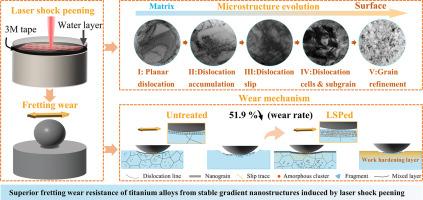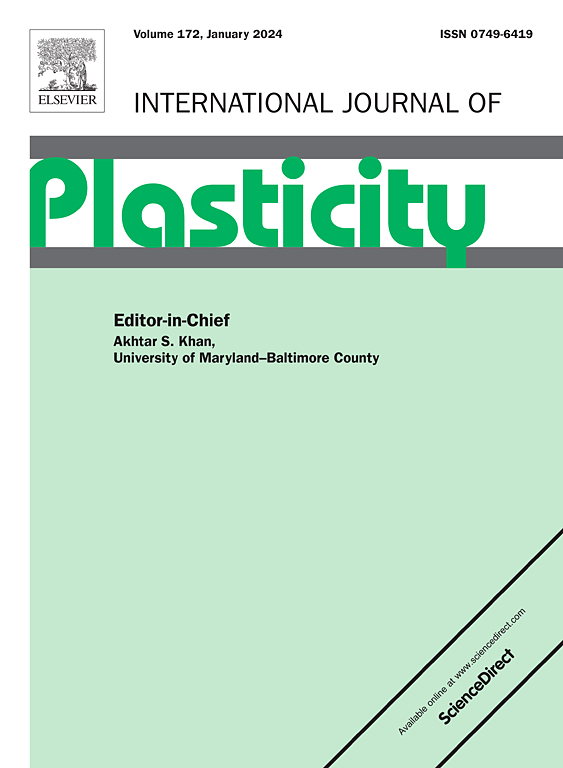Superior fretting wear resistance of titanium alloys from stable gradient nanostructures induced by laser shock peening
IF 9.4
1区 材料科学
Q1 ENGINEERING, MECHANICAL
引用次数: 0
Abstract
TC6 titanium alloy is widely utilized in the blades and fastener structures of aeroengines, where fretting wear failure is a common issue. To address this challenge, various surface treatment techniques have been employed, with laser shock peening (LSP) garnering significant attention due to its excellent surface integrity. Although LSP has been extensively applied to improve the fatigue and friction properties of titanium alloys, its impact on the fretting wear performance and relevant strengthening mechanisms remains insufficiently explored. In this work, we demonstrate that the continuous formation of stable gradient nanograin-amorphous substructures, facilitated by the LSP-induced work-hardening layer, results in a remarkable 51.9 % reduction in the wear rates of titanium alloys under high-load fretting conditions, decreasing from 4.147 × 10–6 mm3 N-1 m-1 to 1.996 × 10–6 mm3 N-1 m-1. Furthermore, through the application of multiple microscopic techniques and energy-based analyses, the gradient mechanics, surface morphology, energy dissipation, microstructural evolution, and dislocation behavior of titanium alloys pre- and post-friction tests are systematically investigated. The superior fretting wear resistance of titanium alloys stems from the synergistic effects of the surface hardening layer, compressive residual stress, and the evolution of gradient nanograin-amorphous substructures, which inhibit the matrix removal and accommodate large plastic strains under fretting slip. This work provides a comprehensive and in-depth understanding of the strengthening mechanisms of the LSP-induced stable gradient nanostructures, offering new insights into the targeted design optimization of surface microstructures for titanium alloys.


求助全文
约1分钟内获得全文
求助全文
来源期刊

International Journal of Plasticity
工程技术-材料科学:综合
CiteScore
15.30
自引率
26.50%
发文量
256
审稿时长
46 days
期刊介绍:
International Journal of Plasticity aims to present original research encompassing all facets of plastic deformation, damage, and fracture behavior in both isotropic and anisotropic solids. This includes exploring the thermodynamics of plasticity and fracture, continuum theory, and macroscopic as well as microscopic phenomena.
Topics of interest span the plastic behavior of single crystals and polycrystalline metals, ceramics, rocks, soils, composites, nanocrystalline and microelectronics materials, shape memory alloys, ferroelectric ceramics, thin films, and polymers. Additionally, the journal covers plasticity aspects of failure and fracture mechanics. Contributions involving significant experimental, numerical, or theoretical advancements that enhance the understanding of the plastic behavior of solids are particularly valued. Papers addressing the modeling of finite nonlinear elastic deformation, bearing similarities to the modeling of plastic deformation, are also welcomed.
 求助内容:
求助内容: 应助结果提醒方式:
应助结果提醒方式:


